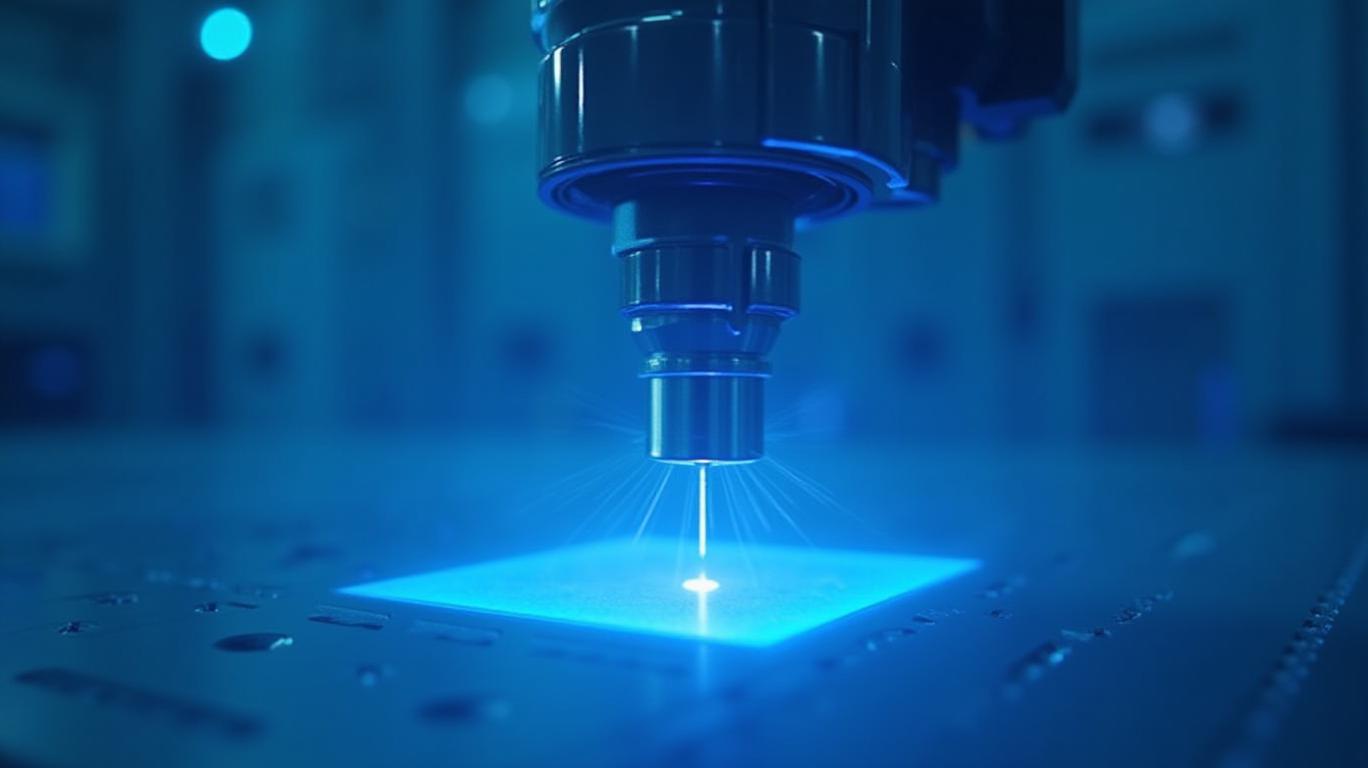Applied Materials: The Unstoppable Force in AI-Driven Semiconductor Growth
The semiconductor industry is at an inflection point, and
(NASDAQ: AMAT) is leading the charge. With Q2 2025 results showcasing 7% revenue growth, record EPS, and a 1.7% margin expansion, AMAT has solidified its position as the go-to provider of tools for the next generation of AI-driven chips. This isn’t just about short-term wins—it’s about a decade-long secular tailwind fueled by the global race to build faster, more efficient semiconductors. Here’s why investors should act now.Margin Resilience: Profitability Amid Chaos
AMAT’s Q2 results were a masterclass in execution. Gross margins hit 49.1%, a 1.7 percentage-point jump from last year, while operating margins expanded to 30.7%. This isn’t luck—it’s strategy. The company’s focus on high-margin AI and advanced logic chip systems (now 65% of Semiconductor Systems revenue) has insulated it from broader economic slowdowns.
While peers face margin compression, AMAT’s ability to price for innovation is unmatched. CEO Gary Dickerson’s emphasis on “major technology inflection points” isn’t just marketing—it’s reflected in non-GAAP EPS growth of 14% to $2.39, a figure that beats 90% of Wall Street estimates. This is a company that turns technological leadership into cold, hard cash.
Supply Chain Agility: Navigating Geopolitical Storms
The Q2 results also highlight AMAT’s geographic diversification, a critical hedge against China’s volatile demand. While China’s revenue dropped to 25% of total (from 43% in 2024), Taiwan and Korea more than made up the difference, growing to 28% and 22%, respectively. This isn’t just a geographic shift—it’s a strategic reallocation of resources to markets with stronger long-term visibility.

Taiwan’s surge—revenue nearly doubled year-over-year—reflects its role as the global foundry capital, producing chips for AI, autonomous vehicles, and 5G. AMAT’s “diversified manufacturing footprint” and global supply chain have allowed it to sidestep trade wars, proving that geopolitical risks are manageable with the right strategy.
Secular Growth Drivers: The AI Gold Rush
The real story here is AI’s insatiable appetite for advanced chips. AMAT’s Semiconductor Systems segment grew 7% to $5.25 billion, driven by foundries and logic chipmakers racing to build the infrastructure for large-scale AI models. Flash memory revenue, once niche, now accounts for 8% of segment sales—a sign that even legacy markets are evolving to meet AI’s demands.
CFO Brice Hill’s emphasis on “robust global supply chain capabilities” isn’t just about logistics—it’s about being the gatekeeper to the AI revolution. With $1.06 billion in free cash flow and $2.0 billion returned to shareholders via buybacks and dividends, AMAT is reinvesting in the future while rewarding investors today.
Why This Is a Core Holding for Tech Investors
- Margin Resilience: 1.7% expansion in a slowing economy? That’s a moat.
- Supply Chain Dominance: No other company can match AMAT’s geographic and customer diversification.
- Cash Flow Machine: A $6.17 billion cash balance and shareholder-friendly policies mean this isn’t a speculative bet—it’s a high-conviction, sustainable growth story.
The risks? Geopolitical tensions and macroeconomic uncertainty loom, but AMAT’s Q2 results show it’s prepared for both. With AI spending expected to hit $1.2 trillion by 2025 (per IDC), AMAT’s tools are the literal building blocks of this future.
Final Take: AMAT Isn’t Just a Semiconductor Play—It’s an AI Play
Applied Materials is the unsung hero of the AI era. Its Q2 results aren’t just numbers—they’re proof that the company is capitalizing on the single biggest tech trend of the decade. With margins rising, supply chains solid, and cash flowing, this is a stock that belongs in every growth portfolio.
The question isn’t whether AMAT will thrive—it’s whether you’re ready to miss out on its ascent.
Act now before the AI boom leaves you behind.

Comments
No comments yet